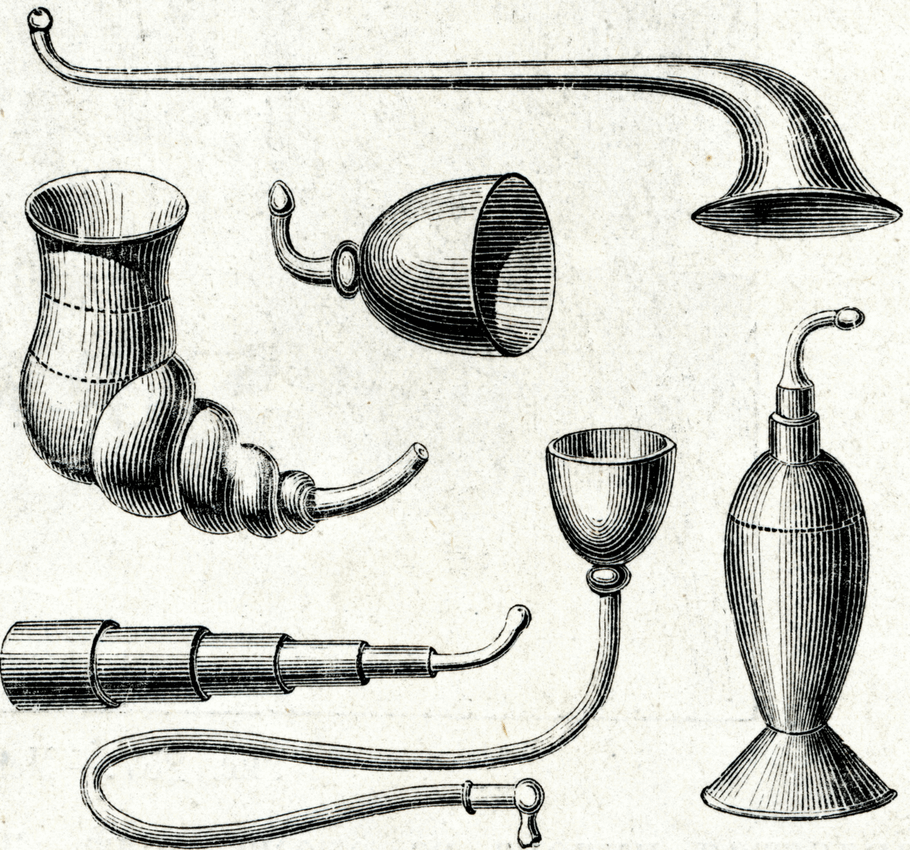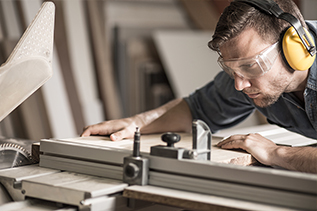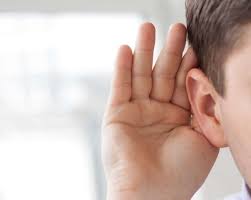Writer Arthur C. Clarke, best known for 2001: A Space Odyssey, once wrote: “Any advanced technology is indistinguishable from magic.”
This might be true of hearing aids: tiny, powerful devices that open up the world of sound for the wearer and reconnect people to one another. Let’s take a journey through the history of hearing aids and trace their advancement from the low-fi ear trumpet to the advanced wireless models we use today.
Hearing Loss in History
According to History Today, “The earliest written record of hearing loss is believed to date from 1550 BC in ancient Egypt. The Ebers Papyrus offer a remedy for ‘Ear-That-Hears-Badly’: injecting olive oil, red lead, ant eggs, bat wings and goat urine into the ears.” It’s unclear if this refers to earwax blockage of hearing loss – but this solution might be frowned upon today by hearing specialists.
With the advent of the Renaissance, patrons of the arts invested greatly in painters, such as Giambattista della Porta, who “describes horns shaped like the ears of animals known to have excellent hearing (though this may be an attempt to create something more akin to a telescope for sound).” In turn, this resulted in crude hearing technology that looked like ear trumpets, invented by Paolo Aproino (whose teacher was Galileo) in the 1610s.
By the 19th and 20th centuries, we see a big push by scientists and inventors to address hearing loss, inspired and influenced by other rapidly growing industries and new technologies. The history of hearing aids has closely followed the advent of mechanization and industry, evolving into powerful digital devices in the 21st century.
19th Century: The Ear Trumpet
Just as their predecessors in previous centuries, many people who were hard of hearing in the 19th century relied on ear trumpets to amplify sound. Ear trumpets are funnels, held up to the hard-of-hearing ear, to capture sound from the environment. Images and texts of this era show people awkwardly holding these oversized cones to their ears. Apparently, they didn’t function so well, either.
Then, along came one of the most ground-breaking inventions in the 19th century: the telephone. Legend has it that Alexander Graham Bell invented the telephone to try to communicate with his dear, deceased brother. As a result, he became the first person who transmit a human voice via electric signal to another machine (the first words spoken were: “Mr. Watson – come here – I want to see you”). Though Alexander Graham Bell forever changed how we communicate, his invention had another effect: according to the Institute of Electrical and Electronics Engineers, the proximity of the telephone to the ear helped hard of hearing people with their conversations, and not unlike humans today, they preferred phone calls to in-person conversations!
Late 19th/Early 20th Century: The First Electric Hearing Aid and the Vacuum Tube
After inspecting the inner workings of Alexander Graham Bell’s telephone, Miller Reese Hutchison put together the first electric hearing aid in 1898. This electric hearing aid used a portable carbon transmitter to amplify weak sound signals. Great minds seem to think alike – especially in this rich time of invention and industry – as an Austrian man named Frederick Alt designed something similar. Quite bulky and heavy, Alt’s carbon transmitter hearing aid amplified sounds by about 15 decibels and was useful for cases of moderate hearing loss.
Along with other things such Dadaist art and Modernist literature, the early 1900s brought many new and exciting innovations. In 1907, in New York City, the vacuum tube was invented by Lee De Forest at the Western Electric Company. The original models were enormous; they weighed approximately 100 kilograms, were the size of a filing cabinet, and had to be plugged in. Additionally, they amplified all sound. While this may initially sound like a great idea for people who struggle to hear, the lack of nuance and differentiation between the unique sounds in your environment can be overwhelming and unhelpful: it did not allow for focus on voices or sounds that users wanted to hear.
Fortunately, the vacuum tube reduced in size to 4 kilograms by 1924, but still, it was not a portable or discreet device. People had to hold “receivers” up to their ears in order to hear the amplified sounds.
1938: The First Wearable Hearing Aid
In 1938, the first wearable hearing aid was invented, which consists of similar components to today’s hearing aids. With this early model, an amplifier-receiver is clipped to the user’s clothes, while a thin wire connected to an earpiece. A battery pack, which powered the device, was also strapped to the user’s clothes.
After World War II, research into the field of audiology expanded. A great number of veterans returned from combat zones with hearing loss and tinnitus. As research grew, newer devices were developed to address hearing loss. Transistor hearing aids were introduced in 1952 (two years before the transistor radio): they were boxy devices used with headphones, worn by the user. Over years of continued research and development and re-design in the 2nd half of the 20th century, these hearing aids became recognizable as the predecessors of hearing aids we use today.
21st Century: Digital, Wireless Hearing Aids
Technological devices of all kinds have gotten sleeker and smarter in the 21st century. After 2015 was named “Year of the Hearable,” advanced hearing aids have only gotten better. In terms of design, hearing aids are now so small that they are nearly invisible (in fact, some are, depending on the model).
As with hearing aids of the past, contemporary hearing aids continue to be inspired by phones. Our newest hearing aids are compatible with your smartphone, wirelessly streaming phone calls, music, and other media directly to your hearing aids. Furthermore, today’s hearing aids are deemed “mini-computers” with super-fast processing systems that automatically adjust program features to help wearers focus on sounds they want to hear. Other fantastic features include the ability to geotag locations with your user preferences, resistance to water and dirt with nanocoated construction, and fully rechargeable lithium-ion batteries.
And, best of all, our newest advanced hearing aids bring significant benefits to your health and well-being by ensuring that you are always connected to the sounds around you.
Want to improve your hearing? Contact us at Purchase Ear Technology by calling (270) 558-3996 or visit our office located at 2008 Broadway, Paducah, KY 42001.









